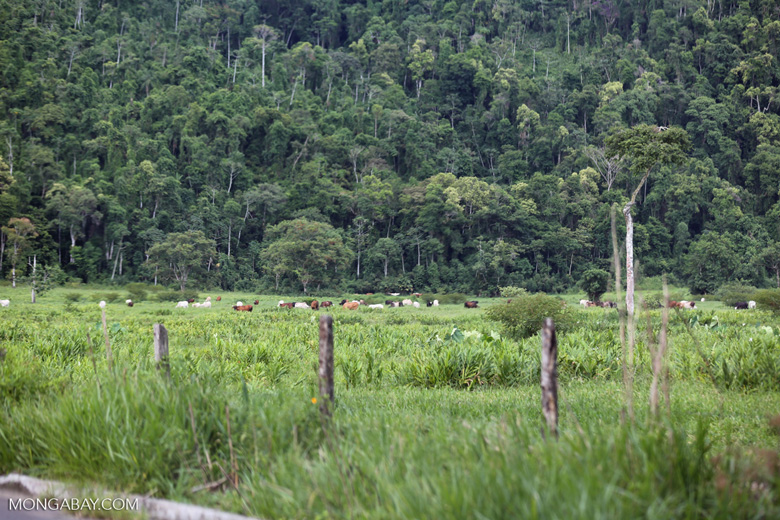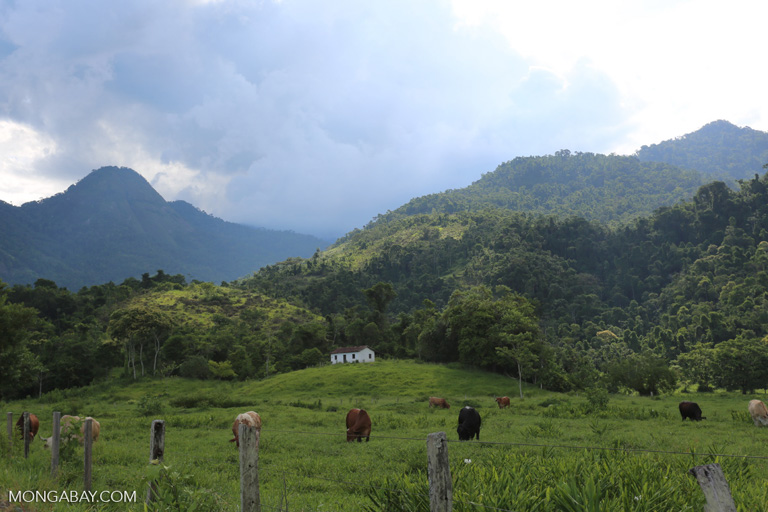- A recent study finds that financial incentives to move people away from cattle ranching don’t address cultural and logistical hurdles to changing course.
- Even though ranchers could earn four times as much per hectare farming soy or up to 12 times as much from fruit and vegetable farming, many stick with cattle as a result of cultural values.
- Ranchers, along with small-scale farmers, could benefit from targeted infrastructure investments to provide them with easier access to markets, according to the study.
- The researchers argue that their findings point to the need for policies that take these obstacles into account.
Cattle ranching can be a scourge to forests, requiring vast tracts of cleared land to produce relatively small amounts of food. It is also the primary cause of deforestation in Brazil. In an effort to protect Brazil’s remaining forests in the Amazon, leaders have come up with programs to tempt ranchers into other lines of work, such as giving them a break on interest rates charged for loans to invest in more sustainable livelihoods. But these initiatives haven’t made much headway in reducing ranching, puzzling many researchers.
A recent study, published in the most recent issue of the journal Ecology and Society, provides some clues to why many of these attempts might not be successful. The team behind the research, led by environmental scientist Rachael Garrett of Boston University, has found that Brazilian ranchers have more than money on their minds and face challenges in spite of these programs. Their conclusions shake up the calculus required to help them transition to more lucrative, less environmentally destructive livelihoods.
“Throwing money at farmers in the Amazon is not going to solve all of our problems because there are major, long-standing, cultural traps that prevent farmers from wanting to move out of what they’re doing,” Garrett said in an interview. “That’s particularly strong with respect to ranching because that’s such a deeply embedded practice.”

Garrett and her colleagues noticed that, despite the fact cattle ranching isn’t very profitable for many of its practitioners in Brazil, many seemed reluctant to move into higher-paying sectors, such as growing soybean or farming fruit or vegetables. They calculated that soybean farmers earn about $1,000 per hectare, four times what cattle ranchers earn on average. Fruits and vegetables are even more profitable commodities.
That led Garrett to wonder, “If they’re not doing these things because of income, why are they doing it?”
At the same time, the team had “rich data on subjective well-being” from interviews with farmers and ranchers in 2010 and 2011 living in two regions in the Amazonian state of Pará. When she analyzed the data, Garrett arrived at a startling conclusion.
“I was just totally shocked that there was no relationship between any of the income metrics that we had and any of the happiness metrics,” she said.
From their responses, cattle ranchers, in particular, seemed to favor a quiet life in the countryside to more intensive farming or to moving into areas closer to cities, even though those changes might have meant a bigger paycheck.

But while part of the explanation came from a culture that values the “tranquility” of a life of cattle ranching, Garrett said that wasn’t the whole story.
“Instead of finding a lot of positive reasons why they [continued ranching], I found a lot of barriers as to why they might not be doing [better-paying forms of work],” she said.
Among them was the difficulty in getting farmed goods into the hands of buyers. That’s especially important for farmers trying to get vegetables or fruits to market before they spoil. And the data revealed that it isn’t just ranchers who cling to less-than-optimal food production methods, Garrett said.
“You’ll see small farmers doing all of the things that the large farmers do, in terms of really low-income cattle ranching, using fire, eking out a really measly income,” she said.
This new information points to the need for “a national-scale policy” that takes into account the needs of these farmers and ranchers.

“They really need to be investing in infrastructure, and I don’t mean roads,” Garrett said. “Roads are highly controversial.”
She said that processing facilities — those that might turn fruit into easier-to-ship purees, for example — as well as assistance with refrigerated transport for their goods, could help “small and unmechanized farmers” diversify beyond “the major export commodities like beef and soy.”
With that help, farmers and ranchers could move into production processes that yield more food from smaller areas of land, while at the same time boosting their bottom lines.
New policies need to be aimed at tackling “this persistent problem of low-income, environmentally degrading land uses in the Amazon,” Garrett said. “It’s about getting the best bang for your buck in terms of sustainability if you are going to invest in development and infrastructure.”
CITATIONS
Garrett, R. D., Gardner, T. A., Morello, T. F., Marchand, S., Barlow, J., Ezzine de Blas, D., … & Parry, L. (2017). Explaining the persistence of low income and environmentally degrading land uses in the Brazilian Amazon. Ecology and Society, 22(3).
Henders, S., Persson, U. M., & Kastner, T. (2015). Trading forests: land-use change and carbon emissions embodied in production and exports of forest-risk commodities. Environmental Research Letters, 10(12), 125012.
Banner image of cattle in Colombia by Rhett A. Butler/Mongabay.
FEEDBACK: Use this form to send a message to the author of this post. If you want to post a public comment, you can do that at the bottom of the page.
Follow John Cannon on Twitter: @johnccannon
